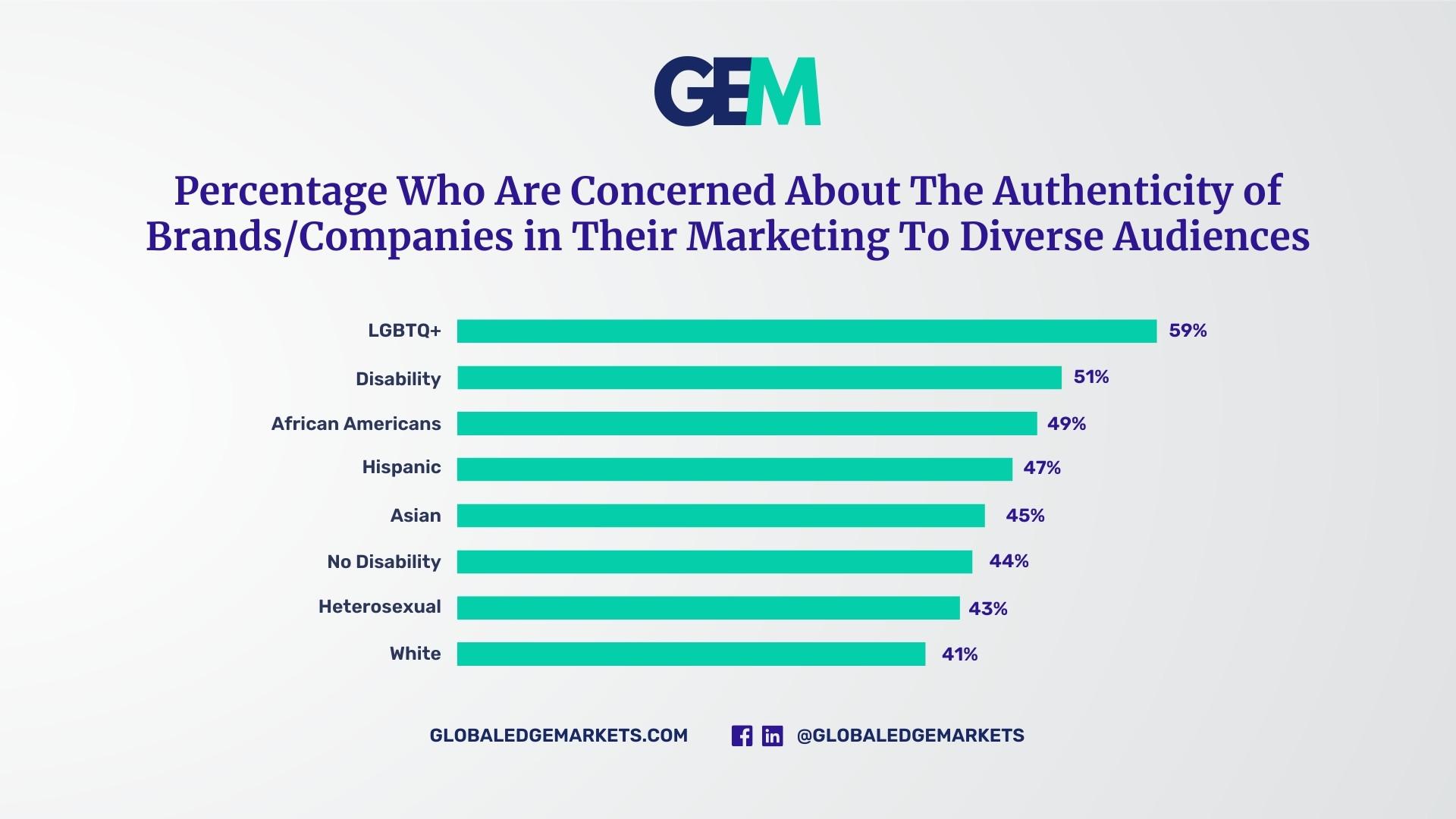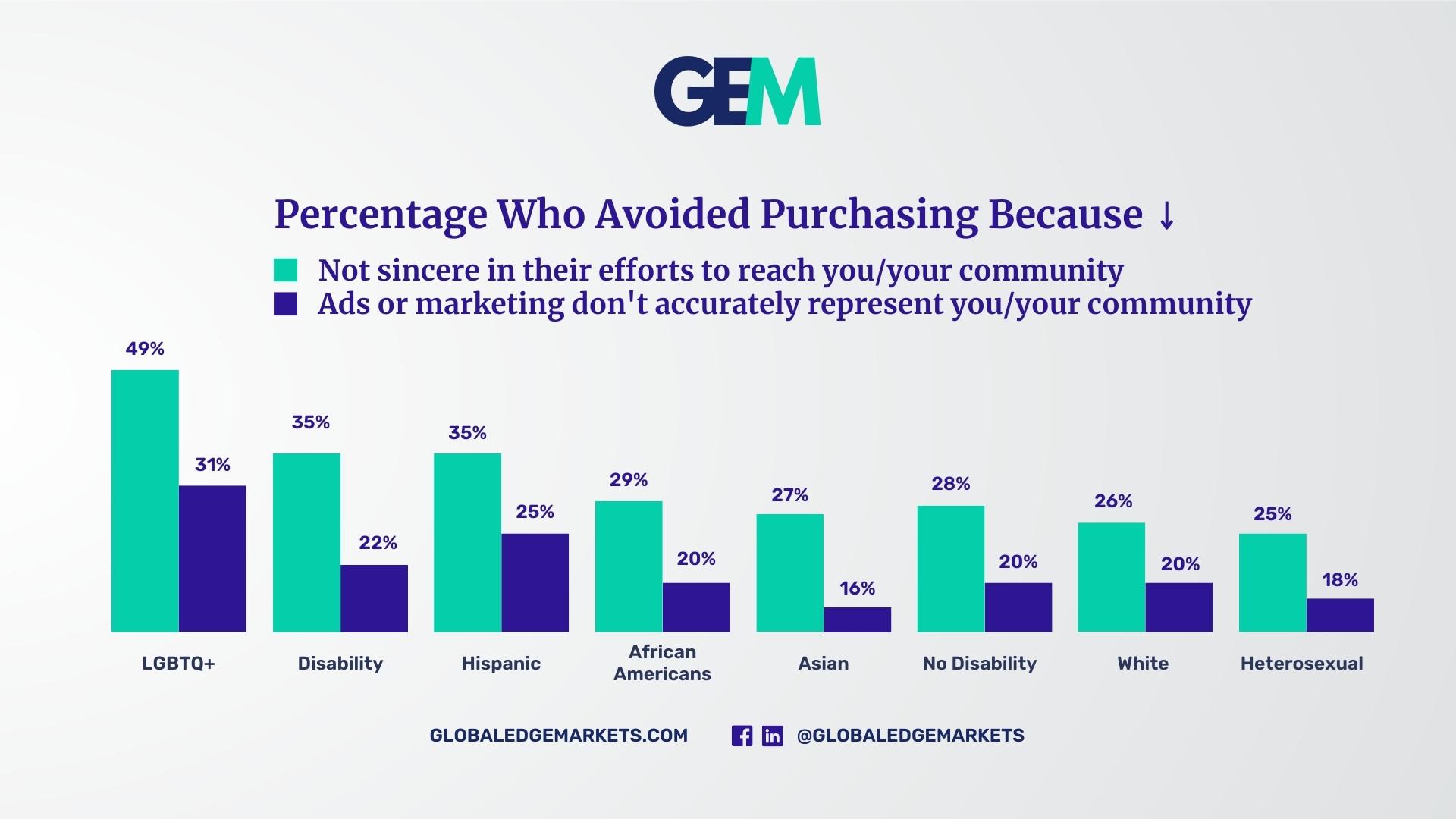Is Your Advertising & UI/UX Ready for the US Demographic Change?
US demographics are changing rapidly, and the population is on track to become majority-minority by 2045. As a result, companies and brands must take notice of these changes and ensure that their advertising and UI/UX strategies are well-prepared to represent the diversity of the US today. Failing to do so can lead to insincere or inaccurate messaging, resulting in serious blowback from consumers. On the other hand, those companies that make genuine efforts to represent and consider diverse populations will gain loyalty and increase revenue.

The Benefits of DEI in Advertising
Advertising campaigns that embrace diversity, equity, and inclusion (DEI) have numerous benefits. By authentically representing different backgrounds, companies can attract new customers who may not have been exposed to their brand or messaging. Additionally, DEI increases customer loyalty as customers feel seen and valued by the brand they’re supporting. Finally, effective DEI campaigns can improve a company’s reputation both internally among employees and externally with customers.

How Companies Can Implement DEI in Their Advertising

- When creating an advertising campaign with DEI at its core, there are several steps companies should take to ensure success. First and foremost, it is crucial for businesses to understand how people from different backgrounds may engage with their product or service differently than others.
- For example, certain cultural aspects may influence how a consumer interacts with a product—such as language preferences or preferred payment methods—so having this knowledge is critical when developing an inclusive campaign. Moreover, businesses should also consider having representatives from all backgrounds present during brainstorming sessions for ad campaigns; this way, everyone's input can be heard and respected during the creative process.
- Lastly, companies need to conduct extensive research into any groups they plan on targeting in their campaigns; this research should involve listening to feedback from members of those communities as well as understanding the nuances of language used by each group so that messages are accurately conveyed without offence or misinterpretation.

The Benefits of DEI in UI/UX
- In our increasingly diversified world, it is more important than ever to design intentionally with DEI in mind.
- DEI practices are becoming increasingly popular among User Interface/User Experience (UI/UX) practitioners as the moral imperative for companies to build empathy and respect for their users grows. Integrating DEI into UX design principles can make products more engaging, accessible, empowering, and profitable.
- Research has even shown that teams focusing on DEI can significantly improve user satisfaction ratings with as much as a 20% increase in positive feedback. Treating people of all backgrounds and identities with dignity results in improved quality assurance and increased productivity, allowing teams to work towards a free and robust exchange of ideas.
- Ultimately, by weaving DEI through each layer of the UI/UX process —researching user groups to designing prototypes— we enable better practice outcomes now while building sustainable foundations for a long-term inclusive future.
How Companies Can Implement DEI in Their UI/UX
Companies can show their commitment to DEI in their UI/UX by integrating DEI features at every stage of their product’s lifecycle. This can range from creating an accessible and human-centered design process that considers the needs of all users, employing diverse teams to develop products and services, gathering feedback regularly from underrepresented groups during user testing, and incorporating inclusive language into instructional content.
Doing so can provide companies with a competitive edge while simultaneously demonstrating values of inclusion. Ultimately, the goal should be to create an intersectional experience that is comfortable, engaging, and stylistically inspiring, regardless of someone’s background or identity.

Conlusion
As US demographics shift rapidly toward becoming majority-minority by 2045, it is essential for CMOs and CEOs alike to create meaningful advertising campaigns and user experiences that accurately reflect these changes. Companies who make sincere efforts towards DEI will reap numerous benefits, such as increased customer loyalty and improved internal and external reputation; however, failure to do so could easily lead to inaccurate messaging, resulting in negative consequences for the brand involved.
Therefore, businesses today must invest time into understanding how people from different backgrounds may interact with their product or service differently while conducting extensive research into any targeted groups if they want their business to succeed in this ever-changing landscape of US demographics.

You’re bound to struggle without a solid plan that outlines how you will establish a sustainable and agile business and achieve your goals in this ever-changing digital world. Are you ready to achieve a return on your innovation investment? Let GEM help!





